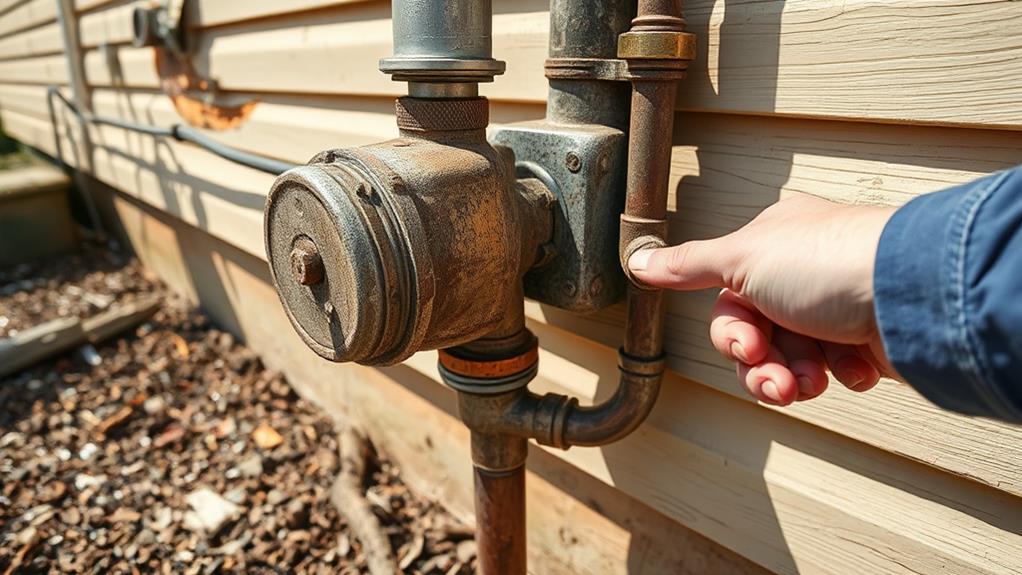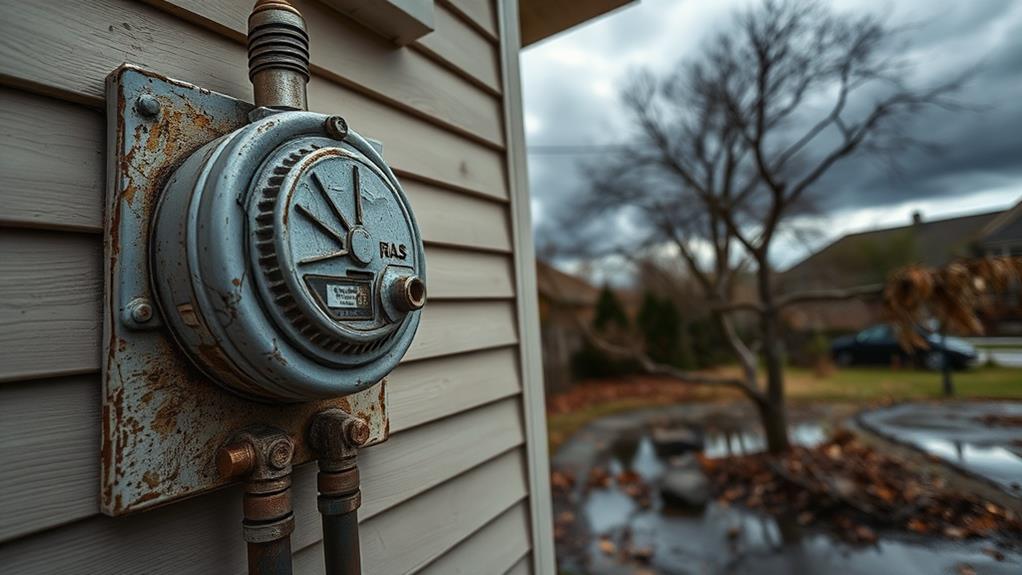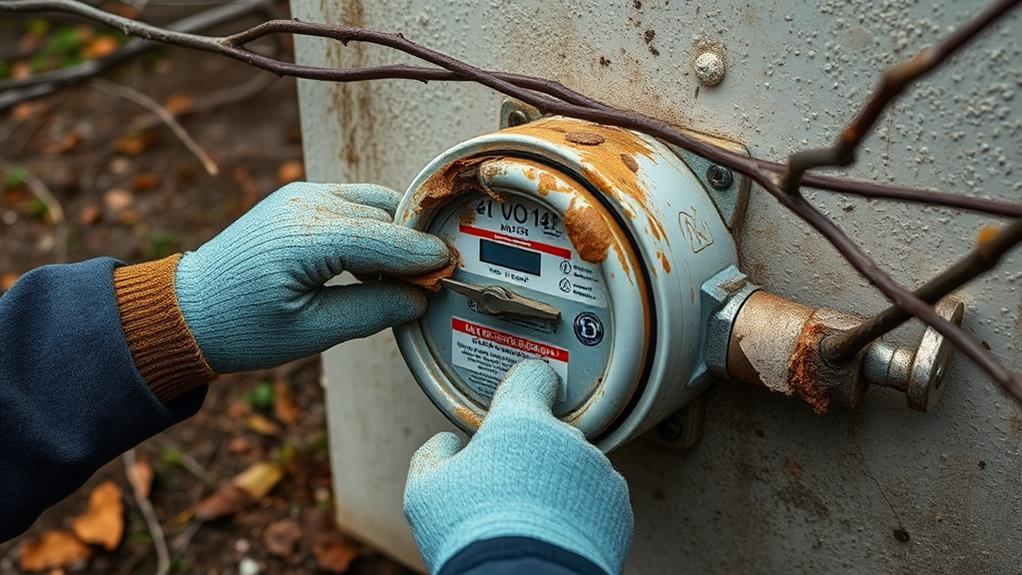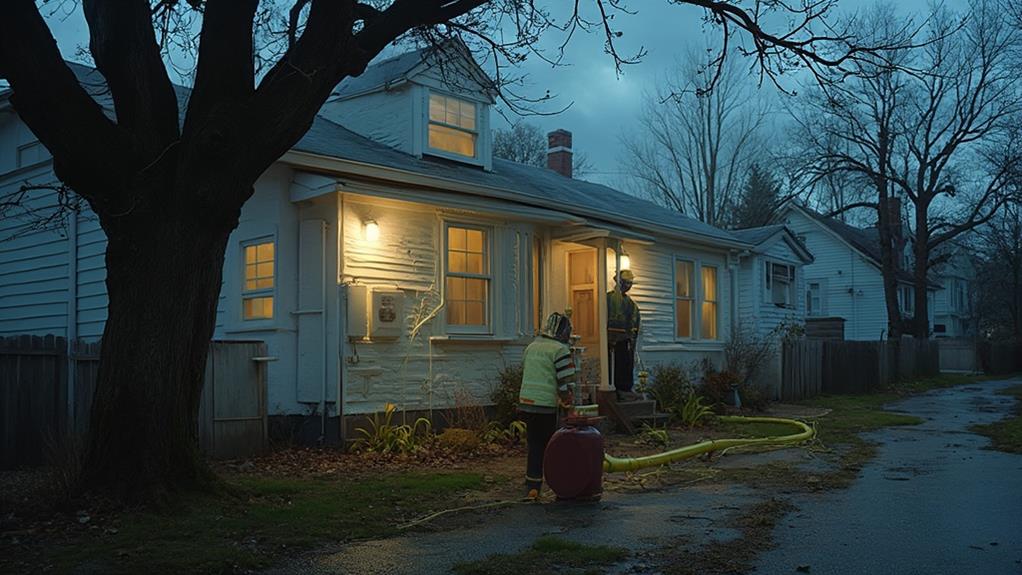After a major storm, gas line safety requires immediate attention. Start with a visual inspection of all visible gas lines, checking for physical damage or shifts in position. Examine outdoor gas meters for signs of damage or submersion. Carefully check for gas odors both inside and outside the building, evacuating immediately if detected. Test pilot lights on gas appliances, following manufacturer instructions. It's crucial to schedule a professional inspection to detect any hidden leaks, corrosion, or structural damage. Remember, only qualified technicians should perform repairs on gas lines. These essential checks are the first step in ensuring your property's safety post-storm.
Visual Inspection of Gas Lines

Regular visual inspections of gas lines are crucial for maintaining a safe home or workplace environment. After a major storm, these inspections become even more critical due to the potential for damage caused by high winds, flooding, or debris.
Begin by examining all visible gas lines, both inside and outside the building, for signs of physical damage such as dents, cracks, or corrosion. Pay close attention to areas where pipes enter the structure, as these are particularly vulnerable to storm-related damage.
Check for any visible shifts in the gas line's position, which may indicate compromised connections or supports. Look for signs of water damage, especially in areas that may have been flooded during the storm. Inspect gas meter connections and ensure they are secure and free from debris.
If you notice a rotten egg smell near gas lines or appliances, this could indicate a gas leak. In such cases, evacuate the premises immediately and contact your gas company or emergency services. Never attempt to repair gas lines yourself; always rely on qualified professionals for any necessary repairs or replacements. Regular visual inspections can help identify potential issues early, preventing dangerous situations and costly repairs.
Check for Gas Odors
A critical aspect of gas line safety is the detection of gas odors. Natural gas and propane are odorless in their natural state, but utility companies add a distinctive smell, often described as rotten eggs or sulfur, to make leaks easily detectable. After a major storm, it's crucial to check for these odors throughout your property.
Begin your inspection outside the house, paying close attention to areas where gas lines enter the building. Move systematically through each room inside, focusing on appliances that use gas, such as stoves, water heaters, and furnaces.
If you detect even a faint gas odor, do not ignore it or attempt to locate the source yourself. Immediately evacuate all occupants and pets from the premises. Do not use any electrical devices, light switches, or phones inside the house, as these could potentially create a spark. Once safely outside, contact your gas company or emergency services from a safe distance. Do not re-enter the building until professionals have inspected the property and declared it safe.
Regular odor checks can prevent potentially dangerous situations and ensure the ongoing safety of your home.
Examine Outdoor Gas Meters

Inspecting outdoor gas meters is a crucial step in maintaining gas line safety after a storm. Begin by visually examining the meter for any signs of damage, such as cracks, dents, or bent components. Check if the meter is still securely attached to the building and that the gas line connections are intact. Look for debris or fallen objects that may have struck the meter during the storm.
Ensure that the meter is not submerged in water or covered by mud, as this can affect its functionality and pose safety risks. If you notice any damage or submersion, do not attempt to fix it yourself. Instead, contact your gas company immediately for professional assistance.
Pay attention to the position of the shut-off valve, typically located on the pipe leading into the meter. If it's perpendicular to the pipe, the gas is off; if it's parallel, the gas is on. In case of any doubts about the meter's condition, turn off the gas supply using this valve and seek expert help.
Regularly clear the area around the meter of vegetation, snow, or other obstructions to maintain easy access and visibility for future inspections and emergency situations.
Test Pilot Lights
Testing pilot lights is a critical step in ensuring gas line safety after a storm or any prolonged period of disuse. Pilot lights are small, continuous flames that ignite the main burner in gas appliances such as water heaters, furnaces, and stoves. After a storm, these pilot lights may have gone out due to strong winds or flooding, potentially leading to gas accumulation if not addressed promptly.
To test a pilot light, first locate it on the appliance. If you smell gas, do not attempt to relight the pilot and instead evacuate the premises immediately. If there's no gas odor, follow the manufacturer's instructions for relighting the pilot. This typically involves turning the gas control valve to "pilot," pressing it down, and using a long lighter to ignite the pilot while holding the valve. Once lit, continue holding the valve for about a minute before releasing it.
If the pilot light fails to stay lit or you encounter any difficulties, it's crucial to contact a professional technician. They can diagnose and fix any underlying issues, ensuring your gas appliances operate safely and efficiently.
Professional Inspection and Repairs

Scheduling regular professional inspections and repairs is paramount for maintaining gas line safety and preventing potential hazards. After a major storm, it is particularly crucial to have a licensed gas technician thoroughly examine your gas lines and appliances for any damage or potential issues.
Professional inspectors have the expertise and specialized equipment to detect leaks, corrosion, or structural damage that may not be visible to the untrained eye. They can assess the integrity of gas connections, valves, and meters, ensuring that all components are functioning correctly and safely.
If repairs are necessary, only qualified professionals should perform the work. Attempting DIY repairs on gas lines can be extremely dangerous and may violate local regulations. Certified technicians will use appropriate materials and follow strict safety protocols to address any issues.
During the inspection, the professional may also provide recommendations for upgrading outdated equipment or improving the overall safety of your gas system. This proactive approach can help prevent future problems and ensure your home remains safe and compliant with current safety standards.
Gas Line Emergency Preparedness
How prepared are you for a gas line emergency? Developing a comprehensive emergency plan is crucial for every household. Start by familiarizing yourself with the location of your home's main gas shutoff valve and ensure all family members know how to operate it. Keep necessary tools, such as an adjustable wrench, readily accessible near the valve.
Create an emergency contact list that includes your gas company's 24-hour hotline, local fire department, and a licensed gas line professional. Install natural gas detectors in your home, particularly near gas appliances, and test them regularly. Educate family members on the signs of a gas leak, including the distinct rotten egg smell and hissing sounds.
Establish a clear evacuation plan and designate a safe meeting point away from your property. Conduct periodic drills to ensure everyone understands the procedures. Keep a well-stocked emergency kit with essentials like flashlights, batteries, first-aid supplies, and non-perishable food items. Consider investing in a battery-powered or hand-crank radio for emergency updates. Regularly review and update your emergency plan to address any changes in your household or local safety protocols.
Frequently Asked Questions
How Long Can Gas Lines Remain Functional After Being Submerged in Floodwater?
Gas lines' functionality after submersion in floodwater varies depending on factors like water composition, duration of exposure, and pipe material. Generally, immediate inspection is recommended. Prolonged submersion can lead to corrosion, compromising the line's integrity and safety over time.
Can Lightning Strikes During Storms Damage Underground Gas Lines?
Lightning never strikes twice, but once is enough. Lightning strikes can potentially damage underground gas lines. While rare, the intense electrical current can cause soil heating, pipe corrosion, or electrical arcing, potentially compromising the integrity of gas infrastructure.
Are Wireless Gas Detectors Reliable for Post-Storm Gas Leak Detection?
Wireless gas detectors can be reliable for post-storm gas leak detection when properly maintained and calibrated. They offer convenience and real-time monitoring capabilities. However, their effectiveness may be impacted by environmental factors, battery life, and signal interference.
What Is the Lifespan of Flexible Gas Connectors Used in Homes?
Ah, the immortal flexible gas connectors, destined to outlive us all! In reality, these unsung heroes of home plumbing typically have a lifespan of 10-20 years, depending on factors like material quality and environmental conditions. Regular inspections are recommended.
How Often Should Homeowners Schedule Professional Gas Line Inspections?
Homeowners should schedule professional gas line inspections every one to two years. However, more frequent inspections may be necessary for older homes or in areas prone to seismic activity. Annual inspections are recommended for optimal safety and maintenance.
Conclusion
In the aftermath of nature's fury, vigilance becomes the beacon of safety. Gas lines, like veins beneath the earth, require careful examination. Visual inspections, olfactory alerts, and professional scrutiny form a triad of protection. The pilot light, a small flame of security, must burn true. Preparedness stands as a shield against unforeseen dangers. By embracing these essential checks, households transform into fortresses, safeguarding lives from the invisible threat that may lurk within the walls.

